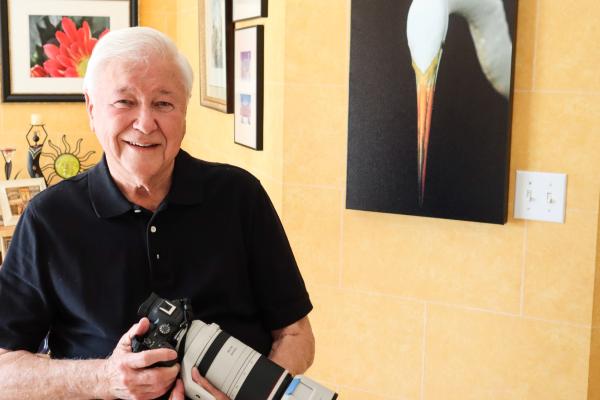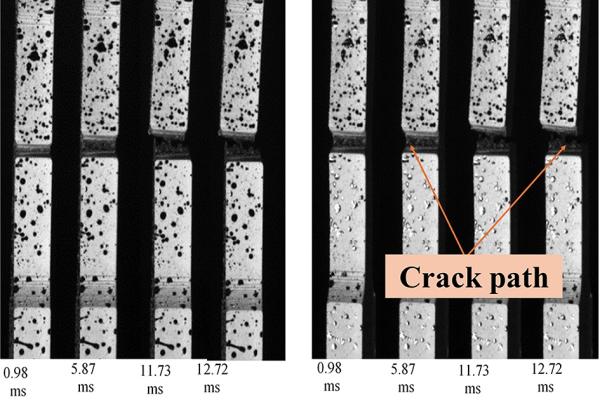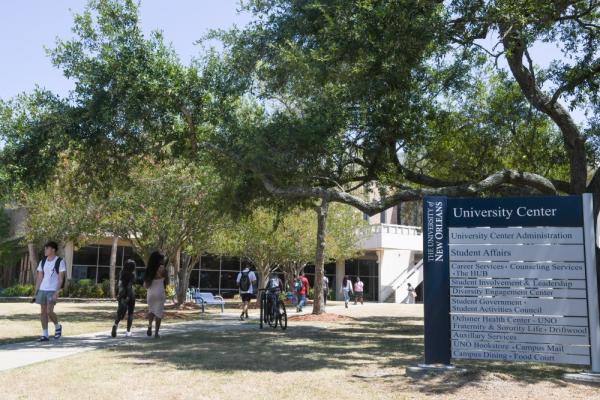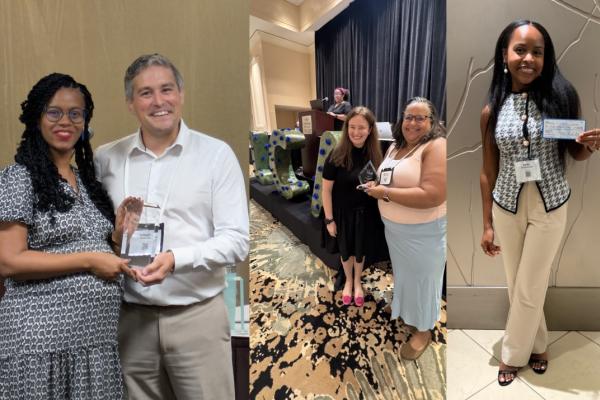Frederick W. Thorne, III (Fred), a graduate from LSUNO’s inaugural 1962 class, was recently recognized by the Cedarburg Artists Guild in Wisconsin with an Honorable Mention 2D in their Annual Juried Exhibit. This latest Mention is for his photograph entitled “Sandhill at Villa Grove Park.” Thorne explained that with 160 artist entries overall, photography is generally overlooked, so this is quite an honor. He has received this honor several times over the past few years with the Guild – twice recently for his photographs of birds. “The key to photography is composition,” Thorne says. “Photographing a bird just standing in water is boring, but capturing the bird taking off for flight or catching a fish shows movement and excitement.” Clearly, the judges agree.
Thorne’s photography alone is enough to write volumes on. However, in talking with him about his photography and love of nature, I also learned about his incredible history of service and his professional life that could rival a good movie, book or television series. Fred Thorne is a life-long public servant, a proud patriot, a top-notch, seasoned investigator, and a lovely human being.
Born and raised in New Orleans, Thorne enrolled at then-LSUNO in 1958 and studied English and French. He enjoyed the small class sizes from being the only class on campus in the first year, and he built strong relationships with his classmates and professors. English Department Chair Dr. Cresap Watson was a huge influence and mentor. He enjoyed working with Psychology professor Dr. Kinsey Stewart, and he particularly enjoyed his history courses with Dr. Steven Ambrose, noted author and co-founder of the National D-Day Museum. Thorne says of his studies, “I thought I was the luckiest person in the world to study under these great men!”
After college, Thorne took a cross-country trek and ended up working as a “soda jerk” at The Grand Canyon. He says he was often called on to help translate for French-speaking visitors to the park, because, despite his lack of real fluency, he could speak more French than anyone else on staff, and he enjoyed meeting visitors from around the world.
Soon after, Thorne joined the Unites States Air Force and served as a communications officer in the Philippines, among other posts. It was there that he purchased his first camera – an old Pentax – and took up photography, a hobby he would pursue throughout his life. During his time in the Air Force, he traveled extensively throughout Asia and other countries and developed a deep love of travel.
After 5+ years’ service, Thorne separated from the Air Force and joined the FBI, where he spent the next 26 years. He began his career like most agents – doing background research on potential agents and other persons of interest. “It wasn’t like the movies,” he says, noting that even in much larger cases, research took up most of his time.
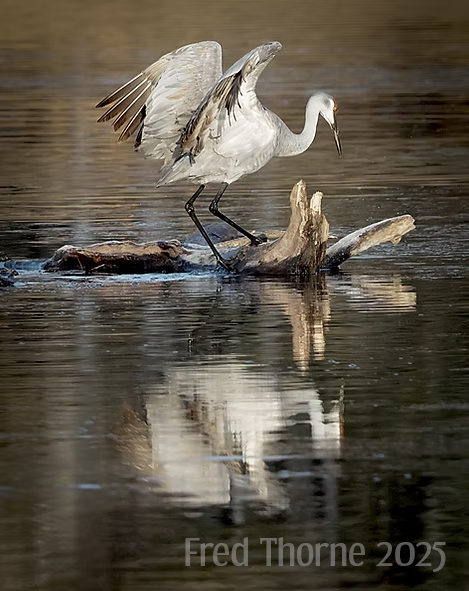 Thorne was transferred to the mid-west – Omaha and later Milwaukee – and joined a team who investigated bank robberies. When a bank was robbed, quick but thorough research was the key to finding the perpetrators. “We would interview the tellers and bank personnel, go through nearby trash cans to search for discarded masks or other evidence, talk with witnesses inside the bank and in the surrounding areas and look for any evidence that could help us track down the robber.”
Thorne was transferred to the mid-west – Omaha and later Milwaukee – and joined a team who investigated bank robberies. When a bank was robbed, quick but thorough research was the key to finding the perpetrators. “We would interview the tellers and bank personnel, go through nearby trash cans to search for discarded masks or other evidence, talk with witnesses inside the bank and in the surrounding areas and look for any evidence that could help us track down the robber.”
However, that work was not always without danger. Early in Thorne’s career, while he and a partner were checking records at a police station in Council Bluffs, Iowa, they heard a bank had been robbed, and one of the robbers had fled to a nearby house. Upon arriving on the scene, a police lieutenant tried to enter the house and was shot and killed by the robber. The robber fled to a home dental office across the street. Thorne looked inside from the side of the doorway and saw him inside wrestling with the dentist. The robber took a shot at Thorne but missed, and thanks to Thorne’s training, he was able to stop the robber before he could fire another round.
As a case agent in Milwaukee, Thorne continued to investigate bank robberies, theft from interstate shipments, financial crimes and anything else he was assigned. He served on the shooting case of presidential candidate and former Alabama Governor George Wallace, investigating the gunman Arthur Bremer, who lived in Milwaukee. He was assigned to conduct the background investigation on Bremer and provided material that helped the prosecution secure a conviction in the case.
All of this led him to the most rewarding work of his career – the organized crime squad.
In the 1970s, the FBI was engaged in a war on organized crime, spurred by efforts to drive the mafia out of Las Vegas. Agents nationwide investigated mobsters who used their influence to grant loans from the Teamsters Union Central States Pension Fund for their associates to purchase and operate casinos in Las Vegas. In exchange, the mob demanded regular percentages of profits that were “skimmed” before the
money was deposited into corporate accounts subject to taxation and control over its distribution. Later, crime bosses obtained loans themselves to purchase partial, sometimes secret, ownership in the casinos, so they could place their people inside – like Frank “Lefty” Rosenthal – to protect the “skim.” In addition to agents in Las Vegas, FBI teams in Chicago, Kansas City, Cleveland and Milwaukee all worked on various aspects of the case. Evidence and results from key cities eventually all came together during trial prep and subsequent trials.
In Milwaukee, agents focused their investigation on notorious mobster Frank Balistrieri, the boss of the Milwaukee crime family from 1961-1993 and a central figure in the skimming of Las Vegas casinos. Thorne joined Mike DeMarco’s team that spent several years investigating Balistrieri, whom they described as “the most dangerous man in Milwaukee.” They even worked with agent Joe Pistone, who lived undercover in New York as “Donnie Brasco” in his efforts to take down the infamous Bonnano crime family. Pistone/Brasco visited Milwaukee several times to forge a relationship between the Bonnanos and Balistrieri. He helped local agents get even closer to the Milwaukee mobsters. The team tracked Balistrieri’s movements, secured court orders to wiretap his phones and staked out his home and business to gain as much information as possible about his involvement with casino skimming.
Through the hard work and dedication of these agents and the whole Milwaukee team, federal prosecutors were later able to convict Balistrieri and his two sons of gambling, extortion and conspiracy in the 1980s. With evidence collected from the teams in the other key cities, more and more convictions followed. Though Milwaukee Journal Sentinel reporter William Janz focused several articles specifically on DeMarco’s and Thorne’s work, Thorne is quick to say that he was a “typical agent who teamed with other agents when working ‘special’ cases. We were well-trained at the Academy, and the training stays with you throughout your career.” He credits the entire Milwaukee team of nearly 40 agents, plus all the agents in the other key cities, for their success in the larger efforts to stamp out organized crime in Las Vegas and around the country. He is proud to have played his part to help.
Thorne worked a short stint in Philadelphia before retiring in 1996. He and his wife returned to the Milwaukee area, where he continued to assist the FBI with background investigations as an independent contractor for another 22 years. Later, he volunteered with the Milwaukee War Memorial Center to help compile photos and biographical information on all the Milwaukee-area service men and women killed in action during World War II. He would spend hours at a time tracking down information to complete each biography and thoroughly enjoyed using his investigative skills to help honor those heroes.
All in all, Thorne gave more than 53 years of service to the United States, and he wouldn’t change a thing. “I love this country, and I’m proud to have served it throughout my career,” he said.
“So,” one may ask, “how does someone go from catching bank robbers and fighting organized crime to bird photography?”
When Thorne finally gave up consulting and volunteer work, photography became his passion. He’d upgraded his camera by this point to a Canon EOS R7 Mirrorless model and spent lots of time photographing his grandchildren and great-grandchildren. He and his wife traveled all over the world, and he enjoyed documenting their travels as well.
These days, the great outdoors near his adopted home of Mequon, Wisconsin is where Thorne loves to spend his time. Currently 84, he keeps in great shape by exploring and looking for those special moments to capture local birds. “Nature keeps me going and gives me energy,” he says. “It gives me a connection to all the beauty that God has given us.”
Thorne regularly stalks the many hunting and fishing areas nearby to visit what he calls his “traps” – specific locations where he’s discovered concentrations of local birds to photograph, including sandhill cranes, whooping cranes, waterfowl, egrets, osprey and many more. He looks forward to driving few hours away this fall to the Mississippi River area, home to many bald eagles, his favorite bird to “shoot.”
Capturing those perfect moments takes lots of time, patience and skill, all second nature to Thorne from his FBI years. He described watching a heron walk through the water to locate a perfect fishing spot. He could tell when the bird had found a bounty of fish and waited for the pounce…for nearly 16 minutes. “Can you imagine how heavy a camera with a large telephoto lens can get holding it still and quiet on your shoulder for that amount of time?” Fred asked. “My arms ached before the crane finally made its move. But I got the shot.”
“With all the species of wildlife out there, why birds specifically?” I asked.
Thorne quickly replied that birds are just special and beautiful. “When sitting, they hide their enormous wingspan many times the size of their bodies,” he says. “And when they open their wings, they look just like angels.”
The way Fred Thorne captures them, I wholeheartedly agree.


